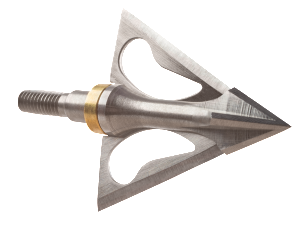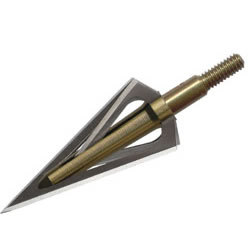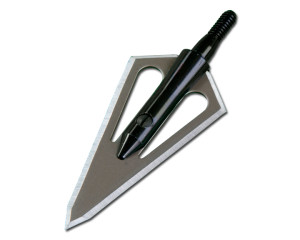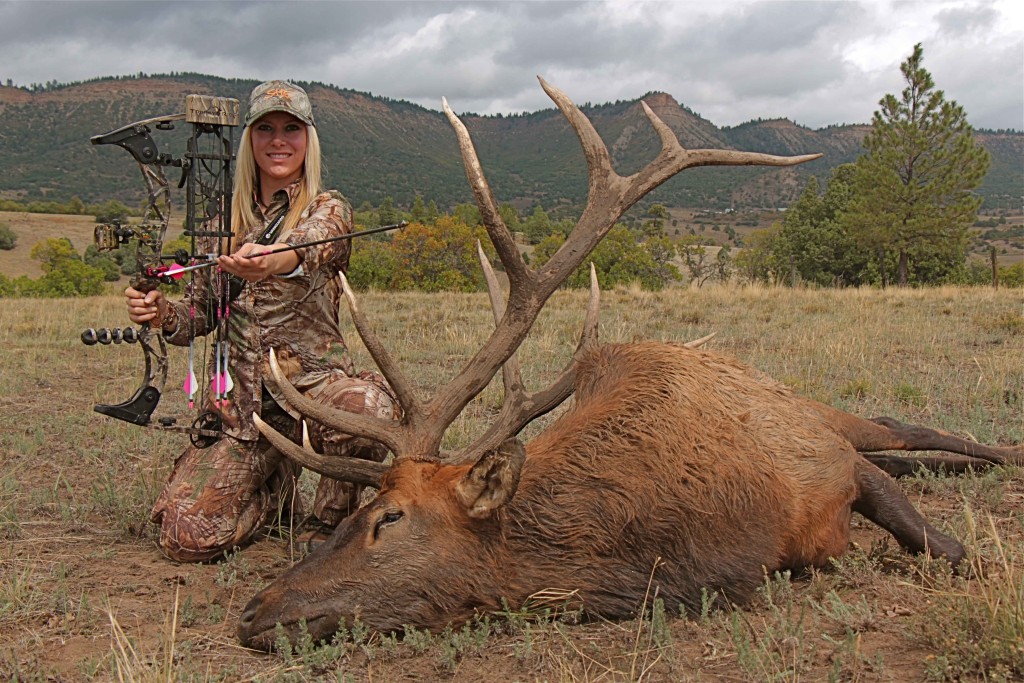
Fixed-blade broadheads aren’t going away, they’re getting better!
by the Hunt Daily staff
There’s no question that mechanical broadheads generate the big buzz in modern bowhunting circles, and rightly so. With the focus on improved durability, high-quality materials, and expert design, the newest generation of fly-like-field point mechanicals get the job done. That is not to say, however, that the obituary is in on fixed-blade broadheads. On the contrary, broadhead manufacturers continue to inject innovation into this staple category, and today the spotlight is swinging back on the fixed-blade set.
Over the years, as compound bows became faster, shorter, lighter, and more precise in their arrow-launching capabilities, bowhunters became increasingly frustrated in their attempts to maintain accuracy when shooting their favorite fixed-blade broadheads. Some reluctantly gave up the advantages they enjoyed (or perceived) from fixed-blade heads, such as strength, penetration, reliability, and simplicity, in order to ensure downrange accuracy from their ever-more-sensitive shooting equipment.
Today, some fixed-blade broadhead manufacturers are turning out hunting heads that fans of “solid-state” broadheads are welcoming with open arms, and delivering the confidence needed to pursue especially tough game like hogs, bear, elk, and moose. Here are three models we really like…
Wac’Em Primitive

No seasoned bowhunter will deny the superior penetration capabilities of cut-on-contact two-blade broadheads on tough hide and bone. The Wac’Em Primitive two-blade heads deliver that old-school bone-smashing performance for the modern bowhunting era. Made of 100-percent hardened steel, the.030-inch thick replacement blades combine with a solid, resharpenable tip and 1.25-inch cutting diameter to provide maximum penetration and optimal flight characteristics.
Muzzy Phantom 4-Blade

Another modern interpretation of the proven broadhead profile, the Muzzy Phantom 4-Blade enjoys a strong fan base among bowhunters who like this head’s stout main blade, cut-on-contact profile, and robust .028-inch bleeder blades.
Magnus Stinger 2-Blade

Clean, simple, and lethal, the Magnus Stinger 2-Blade is a modern-era broadhead that shares DNA with the great blades of yore. Exhibiting exceptional flight from today’s fast bows, and featuring a Tanto-style tip, the main blade can be resharpened or removed from the ferrule and replaced.

Tuning In
Regardless of what broadhead strikes your fancy—fixed-blade or mechanical—experienced bowhunters know that the broadhead is only one component of a comprehensive shooting system. Everything must work together to deliver consistent shot placement. And that, of course, is key to accuracy. The goal, therefore, is to remove or minimize all the variables that can negatively affect arrow flight when shooting broadheads.
A smooth, straight, and predictable arrow flight is not only key to accuracy, it also ensures optimal penetration on game animals. A poorly tuned arrow will lack accuracy and compromise penetration if the broadhead impacts the target an angle instead of straight-on.
Consider the penetration potential of a broadhead that hits a target (in this case, a game animal) slightly sideways versus a perfect 90-degree (straight-on) angle. It’s easy to understand that the mechanical efficiency, or penetration potential, of the broadhead is maximized when all available energy is pushing directly behind the broadhead.
Arrow Selection: Selecting the correct arrow is the first step to achieving proper arrow flight. Every arrow manufacturer provides a selection chart to help with this process. As you can see by examining the Easton arrow chart, bow type, speed, draw weight, and point weight all figure into establishing the correct spine/size arrow you need to work properly with your bow.
Accessory Tuning: Once you have established the correct arrow for your set-up, the next step is to tune your bow so that it allows the arrow to launch cleanly. This means that the arrow launches straight out of the bow, not at an angle (excluding, of course, the inherent arrow flex as it launches). You obtain this by adjusting the arrow rest and knocking point to achieve the ideal “center shot.” Most archers today prefer to let their local pro shop perform this operation, first with a bow square or laser center-shot tool, then by paper-tuning. Paper-tuning should be performed using field points that are precisely matched to the weight of your chosen broadheads.
Sight-In and Fine-Tuning: Paper-tuning is usually the final rough-tune that you’ll do before leaving the pro shop. From there it’s all about tweaking the edges to ensure you are achieving the best possible arrow flight for your equipment combination. This includes tuning for your broadheads.
The best, most comprehensive, easy to understand guide to this involved process is Easton’s Arrow Tuning and Maintenance Guide. Available as a downloadable PDF, this excellent resource will guide you through the final steps of professional-grade bow tuning, and ensure that the broadheads you select will perform to their maximum potential.
SOURCES


Leave a Reply